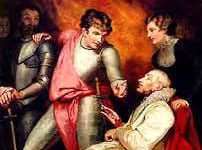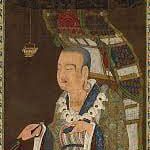The Use of Symbolism in Look Back in Anger
The Use of Symbolism in Look Back in Anger
The Use of Symbolism in Look Back in Anger
‘Symbol’ is an object–animate or inanimate- that stands for something else. In a general sense, everything is a symbol of what it means or signifies. But in literature, when an object is used to represent, illustrate, clarify, deepen or intensify the meaning or significance of something else is called a symbol. In brief, to say, the use of symbols in literature is a device to represent or reinforce the effect or circumstance of a thing or idea, or feeling. John Osborne, in his play entitled ‘Look Back in Anger’, has employed a number of symbols as parallel to the story through which the playwright has effectively portrayed and vivified the mental as well as the physical world of his hero and heroine. The objects of symbols employed by the author of the play are – a toy bear, a toy squirrel, the beast game, the ironing of clothes, the ringing of the church bell and the blowing of the trumpet. Different critics have interpreted the significance of these symbols in different ways. However, we can illustrate their significance as below:
First, the ‘toy bear’ (teddy bear) represents masculine strength and ferocity. Here it stands for Jimmy Porter the hero of the play who is by nature very vehement, irritant and ill-mannered like a male bear.
Secondly, the ‘toy squirrel’ symbolizes feminine softness, gentleness and submissiveness and here it stands for Alison Porter (the wife of Jimmy Porter) who very calmly and patiently submits to the overbearing treatment of her vehement husband.
Thirdly, the ‘beast game’ played by the couple Jimmy Porter and Alison symbolizes the world of animals or wildlife where the couple takes shelter or escape from the cruel realities of life. In other words to say, the ‘bear-squirrel game’ is a refuge where they imagine themselves as animals and wish to adjust themselves to each other in a harmonious relationship like animals who have limited pain and pleasure. While playing the ‘bear-squirrel game’ Jimmy calls Alison: “….a beautiful great eyed squirrel, hoarding nut mincing squirrel,….with highly polished fur.” On the other hand, Alison calls Jimmy, “A jolly super bear; a really marvelous bear.” Thus the game stands for a fantasy world of animals that illustrates the theme of their unhappy married life. They only wish to compensate for the failure of their married life through the playing of the game. Again in Act III, Scene II, we see that both Jimmy and Alison resume the beast game which symbolizes their reconciliation.
Fourthly, the act of throwing off the ‘teddy bear’ on the floor by Jimmy signifies Jimmy’s reaction to Alison’s reluctance to accompany him to Mrs. Tenner Houg who was dying in the hospital. Again we see that Alison while leaving her home for her parental home, picks up the ‘toy squirrel’ from the chest of the drawer and again puts it back. This action signifies Alison’s dilemma- whether she would leave off Jimmy or not.
Fifthly, the action of ironing clothes by Alison and later on by Helena symbolizes their humdrum and troublesome daily life. In one of his early speeches, Jimmy complains:
‘Always the same ritual. Reading the papers, drinking tea, ironing…’
Sixthly, the ringing of the church bell to which Jimmy reacts and says, “Oh, hell! Now the bloody bells have started.” It signifies Jimmy’s opposition to religious practices and rituals. Later on, we see that he hinders Alison from going to church. It also signifies Jimmy’s unhappiness and disorderliness in his mental and physical life.
Seventhly, Jimmy’s blowing on his trumpet symbolizes Jimmy’s vain endeavour to escape from the irritant routine world. Alison in reaction says:
‘God, I wish he’d lose that damned trumpet.’
Thus the playwright Osborne has employed plentiful objects as symbols with the parallel to the depiction of Jimmy and Alison’s unhappy married life. The symbols used in the play have deepened and intensified the exhibition of Jimmy and Alison’s internal as well as external world. If the symbols are kept aside, then the play would turn into failure as a play on the stage. 0 0 0. The Use of Symbolism in Look Back in Anger
The Use of Symbolism in Look Back in Anger
Read More: Renaissance Elements in Doctor Faustus
The Use of Symbolism in Look Back in Anger
N. B. This article entitled ‘The Use of Symbolism in Look Back in Anger’ originally belongs to the book ‘World Drama Criticism‘ by Menonim Menonimus. The Use of Symbolism in Look Back in Anger
Related Searches:
- Symbolism in John Osborne’s Play Look Back in Anger
- Look Back in Anger Symbols
- The Use of Symbolism in John Osborne’sLook Back in Anger
Books of Literary Criticism by M. Menonimus:
- World Short Story Criticism
- World Poetry Criticism
- World Drama Criticism
- World Novel Criticism
- World Essay Criticism
- Indian English Poetry Criticism
- Indian English Poets and Poetry Chief Features
- Emily Dickinson’s Poetry-A Thematic Study
- Walt Whitman’s Poetry-A Thematic Study
- Critical Essays on English Poetry
- Tawfiq al-Hakim’s Novel: Return of the Spirit-An Analytical Study
- Tawfiq al-Hakim’s Novel: ‘Yawmiyyat Naib Fil Arayaf’-An Analytical Study
- Analytical Studies of Some Arabic Short Stories
- A Brief History of Arabic Literature: Pre-Islamic Period …











